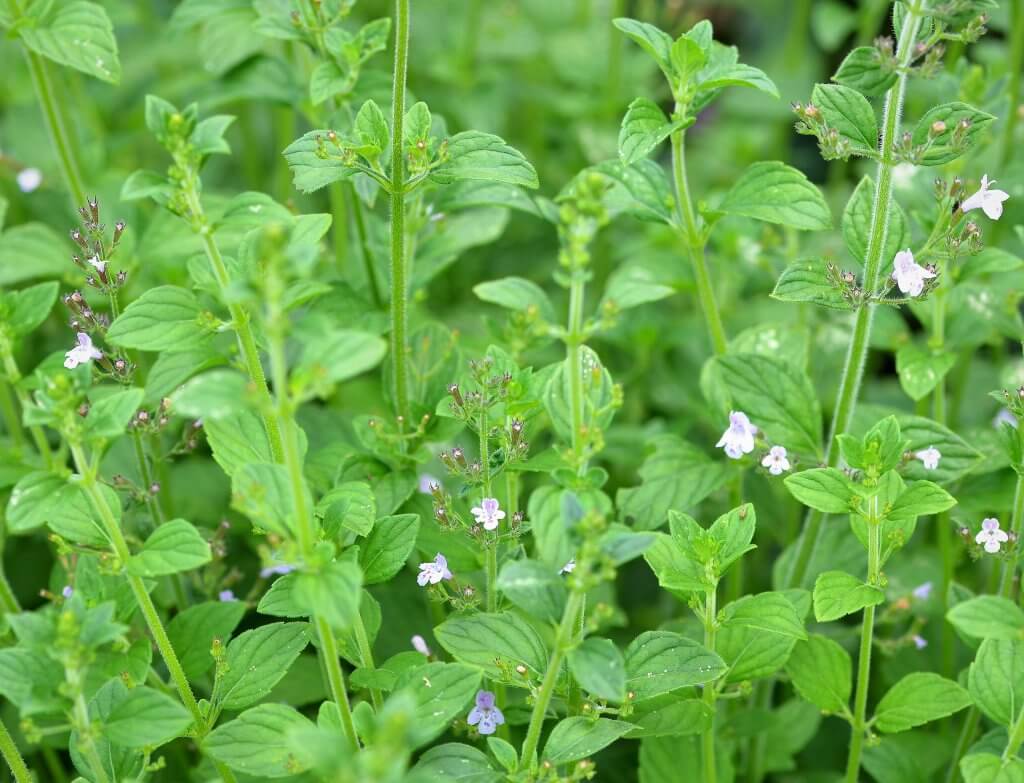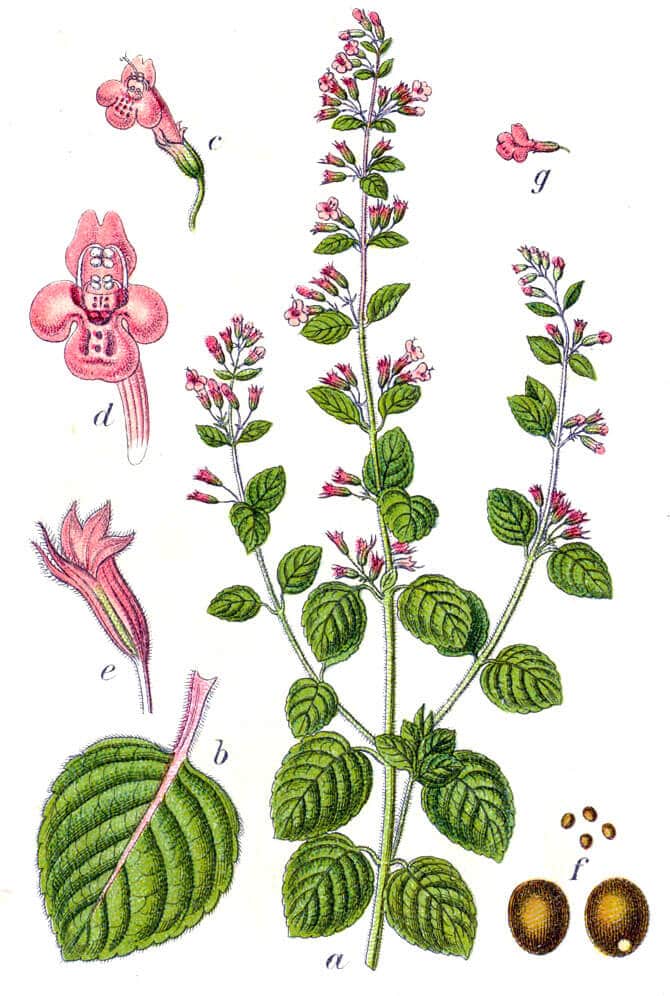Calamint (Calamintha nepeta) is a herbaceous and perennial plant native to many parts of Europe. It usually grows to a height of approximately. You can now typically find it growing wild in many areas across the world, from woodlands to highway edges. However it was once native to mountain slopes, valleys and outcrops.
The shape is compact and bushy with shiny green leaves that resemble oregano. The clouds of tubular flowers can be found in a range of hues, from pink, purple and white. They extend from a central stem that rises from the bushy base of the plant. Fine hairs coat the stems and leaves creating a soft and fuzzy texture. Calamint flowers have a strong fragrance and high amount of pollen, which is very attractive to bees and other pollinators.
Other common names within the Calamintha family include, lesser calamint, mountain balm, mountain mint and catmint.

Cultivation and History of Calamint
Calamint was used extensively throughout the Roman Empire, as a popular culinary and medicinal herb, however you are not as likely to find it as widely available today.
The plant will prefer a spot in full sun, with moist but well drained soil. As a member of the mint family, calamint can spread wildly, so containing it within a pot may make it easier to control. Low growing and robust, it can provide excellent and beautiful ground cover. It is particularly popular in borders and rockeries, but it will need regular maintaining to keep it in check.
After flowering cut the plant back to encourage regrowth in the following year, or alternatively you can leave the seeds to develop as a food source for birds.
Toxicity
The calamint plant is not considered toxic so it is safe to consume. However it is recommended that pregnant women should not handle or consume the herb. Toxicity has been reported in cats so care must be taken if planting in borders and containers.
Uses
Culinary uses of Calamint
The leaves of different calamint varieties are likened to an array of different herbs, from thyme to basil. You can use dried leaves within flavorful herbal teas. Some cultures use fresh, tender leaves to add flavor to their dishes. Some Italian cuisines use calamint (often called Mentuccia) as flavor within vegetable dishes, particularly artichoke, wild mushrooms and tomatoes.

Medicinal uses of Calamint

Calamint was once widely appreciated as a medicinal herb. The leaves have a high menthol content which can help to provide relief for bruising and inflamed skin. The leaves were moistened and softly squeezed to help in realising the healing substances before being applied to the skin. The Romans once used calamint (Mentuccia) as a digestive aid and to relieve painful menstruation. Taken with salt and honey, it was also said to kill intestinal worms.
You can also use the leaves as a treatment to help relieve the symptoms of colds, fevers and headaches. By lightly rubbing the leaves underneath the nose or upon the chest, the fragrance of the menthol can aid in soothing your sinuses and airways.
Did you know…
The scientific name of calamint is a combination of the old Greek words ‘Kalos’ and ‘minthe’, when translated it means ‘beautiful mint’.
Conclusion
Experimenting with different varieties of calamint will allow you explore their diverse range of flavors, aromas and colors. From dried flowers in potpourri to young new leaves in a refreshing herbal tea. Calamint has a variety of natural uses and also provides plenty of benefits to your garden with its beautiful colors and butterfly attracting pollens. From sun filled borders, to adding a color filled ground cover, calamint makes a delicate and fragrant addition to any garden.
—————Written by Hannah Sweet
Hannah is a freelance writer and graphic designer from the UK. With a penchant for travelling, photography and all things botanical, she enjoys writing about a wealth of topics and issues, from conservation and slow living, to design and travel. Learn more about her writing and design services at www.sweetmeanders.co
Many of our readers find that subscribing to Eat The Planet is the best way to make sure they don't miss any of our valuable information about wild edibles.
See our privacy policy for more information about ads on this site






